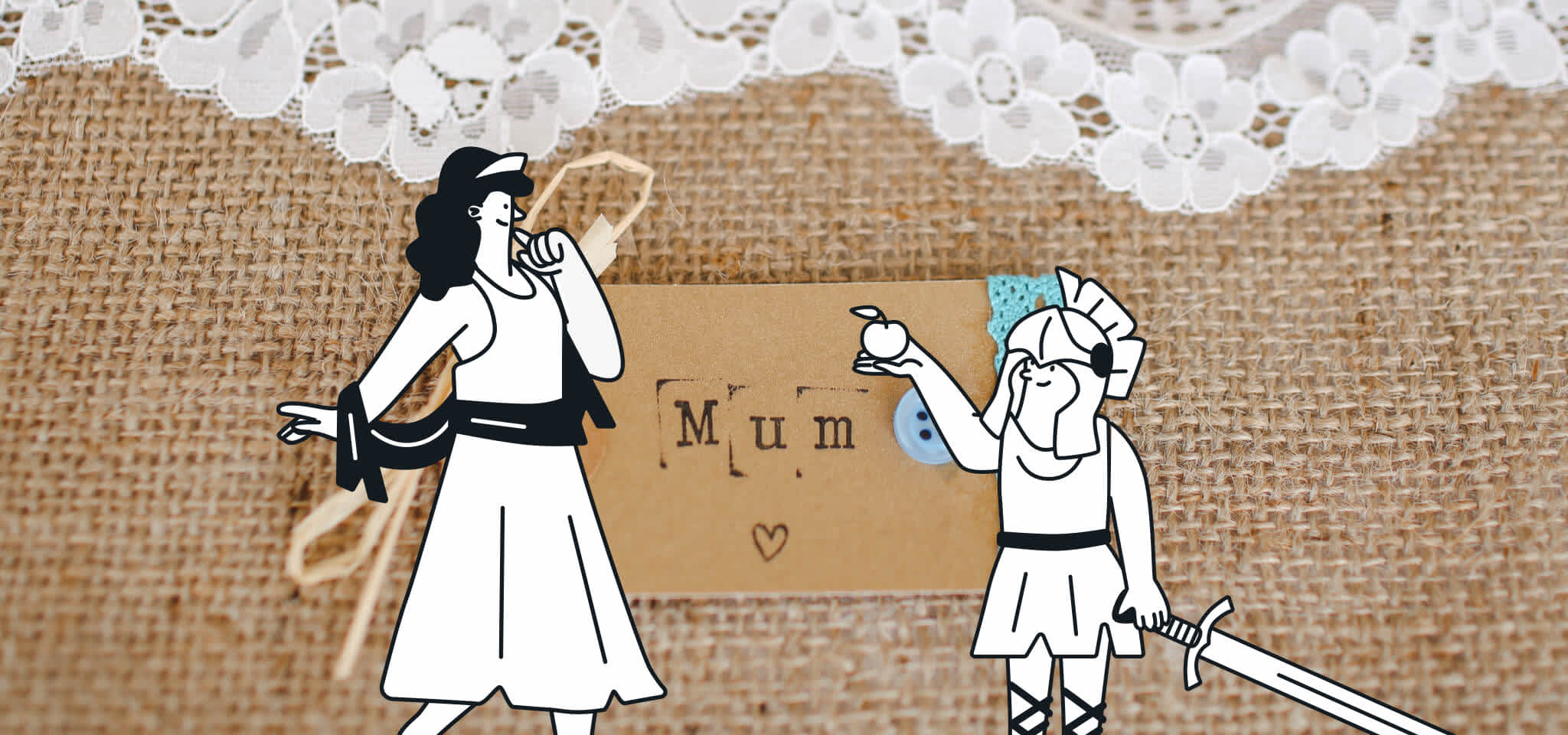Marketing
How to craft an awesome content marketing strategy
How can you create an amazing content marketing strategy that gives your audience what it needs? Get tips and examples. Read more...

PUBLISHED ON
Now that we’ve made it out of 2020, it may feel like you have renewed energy that you don’t know how to use. What are you supposed to do now that a new year is finally here? As tempting as it is to ignore that question and watch The Office reruns for days on end, the truth is that you’ll feel much more prepared for 2021 if you focus on your content marketing strategy.
In this article, we’ll walk you through the definition of a content marketing strategy and give you step-by-step instructions on how to craft an awesome one of your own. And, hey...once you’re done, those Office reruns will still be there.
Table of contents
Benefits of content marketing
Define your goals
Understand your audience
Choose content channels that work for you
Begin to create content that helps you meet your goals
Analyze your content’s success through content marketing statistics
Blogs
Videos
Podcasts and audiobooks
Social media content
Downloadable content
Email marketing
Webinars and AMAs
Interactive content
Public relations content
Images and infographics
Spotify’s Year in Review campaign
Apple’s user-generated “Shot On iPhone” campaign
Coca-Cola’s “Share A Coke” campaign
What is a content marketing strategy?
To understand content marketing strategies, first you need to understand the definition of content marketing.
Simply put, content marketing is creating relevant and helpful content that attracts and retains your target audience. So, a content marketing strategy is a plan for brainstorming, creating, and distributing that relevant content for the audience you want.
Great content isn’t just about business-related engagement and conversion – you want to create a two-way tool for your audience that is valuable and unique, and that your readers can utilize and return to.
“The content you produce will be less about creating independent conversion opportunities and more about creating a cohesive publication that your audience can learn from, return to, and (hopefully) use to inform their purchases.”
Allie Decker, Content Manager at Hubspot
Benefits of content marketing
You need a great content marketing strategy for a number of reasons:
Content marketing increases brand awareness and expands your reach: People have questions and they rely on blog posts, videos, and podcasts to answer them. Leveraging the power of SEO and creating great content to answer some of those questions will allow you to increase your audience and reach new segments.
Content marketing builds trust: When users have a problem they need solving, they look at the experts for help and inspiration on how to tackle it. Frequently producing valuable content will enable you to establish your brand’s expertise and ensure customers perceive you as someone they can trust.
Content marketing moves prospects along the buyer’s journey: Some buyer’s journeys are longer than others and, in some cases, it can take weeks or even months to take that final step towards conversion. Providing useful content for the different stages of the buyer’s journey can help your brand guide prospects down the funnel.
Content marketing helps you build strong relationships with your audience: Providing support, education, and valuable insights through high-quality content is the best way to create lasting relationships with your customers.
You don’t have to be a large enterprise to take advantage of content marketing. Both corporations and small businesses have used (and can use) appropriately-scaled content marketing strategies to increase brand awareness, build trust, and drive conversions..
Okay, so now you know the importance of crafting great, unique content. But how do you get there? How do you build an optimal content marketing strategy?
Steps to create a great content marketing strategy
No excuses – we’re giving you steps! These steps will provide you with a simple, adaptable path to creating your content marketing plan:
Define your goals
Understand your audience
Choose content channels that work for you
Begin to create content that helps you meet your goals
Analyze your content’s success through content marketing statistics
Let’s elaborate on these steps below.
Define your goals
In most areas of life, it’s a pretty good idea to understand why you’re doing something before you do it… and this goes double for content. So, think about it: why do you want to create or refine your content marketing strategy? What are your goals? Do you want to increase your conversion rate? Boost audience engagement and organic traffic? Explore new media channels for outreach?
There’s no wrong answer. What works for you is what works for you. Just be sure that you understand your reasoning and goals before you begin to plan the details of your strategy. That way, you’ll have a clear, defined roadmap of where you are and where you want to go.
Understand your audience
Once you’ve figured out your own goals and desires, it’s time to figure out your audience’s. What do they want from your content? How can you give it to them? Map typical buyer personas and buyer journeys that apply to your consumers. Understand what engages them, which channels they use, and how you can address pain points and genuinely marry your goals to theirs. Giving your audience what they want will help you get what you want – they’ll respond to your personalized attention and care.
“In the new [post-2020] reality, knowing the needs of customers and how they are searching for information online is crucial for businesses to survive.”
Alina Petrova, Head of Marketing at SEMrush
Choose content channels that work for you
Additionally, take note of which content channels and types of content you already use. Maybe you’re very active on Facebook, but your audience seems to prefer Twitter. How can you take what you already know about social media and give it a fresh, appropriate spin on other social networks? You don’t always have to start from scratch – use your existing knowledge and experience to help you. For example, if you’re focused on videos and visual content, you should probably focus on mastering YouTube as opposed to, say, WordPress blogging.
It’s important not to overextend yourself in this step. Don’t try to engage with every kind of content and channel all at once, especially if you’re new to content creation and strategy. Create a schedule and an editorial calendar, focus on your top two or three best content types and channels, and don’t waste focus on the ones that don’t align with you and your audience’s goals. Publishing lower quantities of high-quality content is better than publishing high quantities of low-quality content.
“Due to the growing online competition, publishing less but higher-quality content will be a much more successful tactic. We’ll need to put more effort into research and provide more detailed answers to users’ questions. Focusing on niche content will become a must-have approach for small and medium-sized businesses to attract more qualified leads and build long-term relationships with customers.”
Alina Petrova, Head of Marketing at SEMrush
Once you’ve become comfortable with your top choices, you can explore new avenues for outreach and build higher quantities of content.
Begin to create content that helps you meet your goals
Lights, camera, action! Now, of course, it’s time to begin creating those pieces of content – blogs, social media posts, videos, and everything else you’ve put in your content calendar. If you’re already well-versed in your chosen area of content, great! If not, no worries. See how other brands, content marketers, and influencers create successful, quality content that targets similar demographics. What content marketing tactics are they using well? What can be improved?
Of course, you should always be sure to distinguish yourself through your brand voice and persona. Consistency is key, and you want your audience to have a very clear idea of who you are and what you have to offer. As you meet your goals and become comfortable with your content marketing, feel free to leverage other types of content and channels to see how they can work together (i.e., social + video, email + blog, etc.). The sky’s the limit.
Analyze your content’s success through content marketing statistics
After you’ve been on your content marketing strategy journey for a while, it’s time to see how well your content is performing. After all, you want to make sure you’re meeting your goals and having the audience effect you want.
“Analytics will become an extremely important skill for content marketers. Businesses that have in-depth insights about their audience will be able to offer better personalization and develop more powerful content marketing funnels.”
Alina Petrova, Head of Marketing at SEMrush
Use your analytics and appropriate metrics channels to measure your content’s success and develop these insights. What is performing well, and what can be improved? Why is your content performing well or need improvement? Check your performance based on signups, sales, SEO (Search Engine Optimization) keywords, and more. Once you’ve pinpointed these causes in measurable ways, refine your content marketing strategy to highlight your strengths and fix your weaknesses. Continue to do content audits regularly and for each new channel and content type you add to your strategy.
Types of content marketing you should include in your strategy
You may feel stagnant in your current content marketing strategy, or you may need a little inspiration if you’re starting from scratch. Either way, there are many digital marketing formats and channels marketers use to facilitate success. These include:
Blogs
Blogs are a great way to promote long-form content that may not fit in social media posts or in emails. Use blogs to tell customers about the details of your products and services, and how they can use them to their best advantage. Additionally, you can use blogs for SEO and rank highly for popular and relevant keyword searches. Examples of blogs include our very own Mailjet and Mailgun blogs.

Videos
Videos can be used for dynamic product demonstrations, creative branding updates, and other content that can best be presented visually with some pizazz. You can also use this content to target consumers who prefer it over text. Examples of video content include YouTube videos and shorter Tik Tok vignettes.
Podcasts and audiobooks
Podcasts and audiobooks may be longer-form than other content, but their length doesn’t make them unpopular – quite the contrary. Brands can use this content to put a human, candid spin on content like interviews, promote tie-in audiobooks for media like television and movies, or just to deliver information in an unexpected way that sticks with a user. An example of a brand podcast is Mailgun’s Email’s Not Dead podcast.
Social media content
Content for social media marketing is incredibly popular these days, and you can use it to reach your audience members in real time. Comments, likes, and re-posts can also strengthen consumer relationships and create positive brand associations. Some examples of social media content include Tweets, YouTube videos, and Facebook and Instagram posts.

Downloadable content
Sometimes, you’ll want to be able to directly provide consumers with charts, tables, and other information they can use for themselves. Downloadable content lets you provide helpful examples and resources for your users so they can do some DIY projects. It’s an easy way to promote a broader consumer relationship. Examples of downloadable content include fillable PDFs and charts.
Email marketing
There’s a reason everyone loves email marketing – it’s quick, easy, and you can deliver all kinds of content (like notifications and CTAs) directly to your subscribed contacts whenever you need to, without fearing that they won’t get your message. Email marketing is great for sending quick reminders, important announcements, and unexpected gifts or incentives to your email list.
Email marketing is the best-performing marketing channel and the most effective way to send the right message, to the right reader, at the right time. If you haven’t started planning your email marketing strategy for 2021 yet, now is the time to start. Check out our Email Marketing Guide to learn more.
Webinars and AMAs
Content isn’t a one-way street. Webinars and AMAs let your consumers ask questions and receive information in real time, knowing that there’s a brand representative (or even a subject expert!) on the other side of the screen. An example of a webinar is any of Mailgun and Mailjet’s Email Camp 2020 sessions.
Interactive content
Interactive content gives your audience a way to become immersed in your content and messages. Quizzes, games, and more can deliver information in a fun way, and provide incentives to interact and win prizes and bragging rights. An example of interactive content is Mailjet’s Ultimate GDPR Quiz.

Public relations content
Public relations content can give a boost to big brand announcements and announce mergers, acquisitions, and more. This kind of content helps consumers keep up with what’s going on with your brand and how it impacts them. Examples include press releases and press conferences.
Images and infographics
Nobody wants to just read plain text on a page. Images and infographics – when appropriate – can provide a visual break from content and present new information in a dynamic way for your consumers to digest. Examples include sales and adoption infographics, product and service pictures, and more.
This list is by no means comprehensive, but it can help you get an idea of what types of content fit you best.
Great content marketing examples to inspire you
We get it...sometimes it’s nice to see templates of successful content marketing efforts. Here are a few of our favorites – what lessons can you learn from these campaigns?
Spotify’s Year in Review campaign
This Spotify campaign is a huge hit and goes viral every year because of its careful style and targeting. Every playlist is personalized, which lends an air of uniqueness to the content as opposed to a single, generic “happy end of 2020” message. Spotify also makes use of its famously sleek design and bright colors to create a cheerful “gift” atmosphere around each playlist and entice users to listen. Finally, the campaign’s very concept – your top songs – lends itself perfectly to engagement via nostalgia, sharing, and comparison with others’ playlists.

Spotify is a great example of a successful content marketing strategy because of its inherent content personalization and presentation, simple and accessible format, and virality. Consumers take note of this, and Spotify gains a lot of positive publicity as a result – no doubt their end goal.
Apple’s user-generated “Shot On iPhone” campaign
When Apple wanted to show off the capabilities of its iPhones, it invited users to share iPhone-shot photos and videos on social media for a chance to be featured online, in Apple stores, and in other public spaces. It was wildly successful because Apple recognized the power of two-way communication and an interactive campaign. By promoting user-generated content, Apple received more great content (and promotion) than it could have ever created alone.
The campaign was accessible (just take a photo or video on your phone), customizable (take the pictures and videos you want), and it offered exposure on multiple platforms. By recognizing the power of simplicity and interactivity, Apple created a campaign that’s still going strong.
Coca-Cola’s “Share A Coke” campaign
Coca-Cola knew how to leverage multiple content channels to draw attention to this campaign. Aside from the unique, personalized Coke products featuring various names and sayings, they encouraged buyers to share their custom Cokes on social media to spread awareness. Finally, of course, they created a direct buying channel where consumers could customize Coke products to say whatever they wanted.

While Coca-Cola didn’t go for user-generated content or sleek new designs and packaging, it realized utilizing content and promotion channels everywhere would make its message stick. Additionally, by providing a way for people to “make” their own Cokes, it took advantage of an easy purchasing channel. It’s a great example of how to leverage different types of content to create a user experience: look for your Coke, share it on social media, and buy other personalized Coke products online with a couple of clicks.
While you may not be selling the same products or services as the above brands, these campaigns (and others you may favor) can help inspire you to put your own spin on your campaigns and take advantage of different content channels and styles.
Wrapping up
Whether you’re making playlists, making burgers, or something completely different, it’s obvious that you need to have a great content marketing strategy ready in order to create superior content, get attention, and meet your marketing goals. From planning to analyzing, content requires thought, creativity, and a sense of you and your audience’s needs.
These are the main takeaways to keep in mind when building your own content marketing strategy:
Before you rush into creating content, define your goals and your audience. What do you want to achieve? Who will be reading your content?
Find the right channels and types of content marketing that will help you achieve those goals. Should you create a blog for your brand? Is Instagram the best place to connect with your audience?
Analyze your content marketing results and continue to optimize your strategy as you grow.
Once you’ve developed a winning content marketing strategy, you can easily pivot between content types and channels to what you want. It may seem overwhelming at first but, with a little focus and creativity, the right content can lead to big rewards. After all, as Michael Scott said, “You miss 100% of the shots you don’t take.” And those are some words to live by.
Want to get our all content in your inbox every week? Sign up for our newsletter to get the latest tips, tricks, and marketing trends.
Want to hear more from the experts quoted in this post? Reach out to Alina Petrova, Head of Marketing at SEMrush, and Allie Decker, Content Manager at Hubspot!








